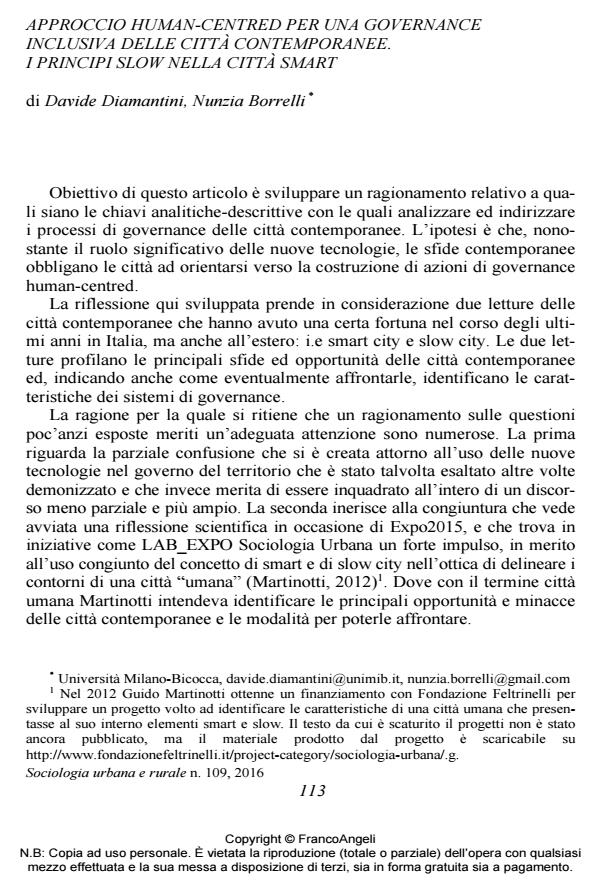Approccio human-centred per una governance inclusiva delle città contemporanee. I principi slow nella città smart
Titolo Rivista SOCIOLOGIA URBANA E RURALE
Autori/Curatori Davide Diamantini, Nunzia Borrelli
Anno di pubblicazione 2016 Fascicolo 2016/109
Lingua Italiano Numero pagine 16 P. 113-128 Dimensione file 78 KB
DOI 10.3280/SUR2016-109008
Il DOI è il codice a barre della proprietà intellettuale: per saperne di più
clicca qui
Qui sotto puoi vedere in anteprima la prima pagina di questo articolo.
Se questo articolo ti interessa, lo puoi acquistare (e scaricare in formato pdf) seguendo le facili indicazioni per acquistare il download credit. Acquista Download Credits per scaricare questo Articolo in formato PDF

FrancoAngeli è membro della Publishers International Linking Association, Inc (PILA)associazione indipendente e non profit per facilitare (attraverso i servizi tecnologici implementati da CrossRef.org) l’accesso degli studiosi ai contenuti digitali nelle pubblicazioni professionali e scientifiche
Obiettivo dell’articolo è dimostrare che i principi slow sono parte del dibattito sulla città smart. A tal fine sono prima presentati i concetti di città smart e di città slow, quindi sono discusse le dimensioni slow della città smart. In merito a queste ultime si propone una prima lista di questioni. Si tratta di questioni centrate sul governo del territorio e su come la governance delle città contemporanee, pur allineandosi alla città smart, stia mettendo in pratica principi slow.
Parole chiave:Città smart, città slow, governance, capacity building, sistema-cibo, innovazione territoriale.
Davide Diamantini, Nunzia Borrelli, Approccio human-centred per una governance inclusiva delle città contemporanee. I principi slow nella città smart in "SOCIOLOGIA URBANA E RURALE" 109/2016, pp 113-128, DOI: 10.3280/SUR2016-109008